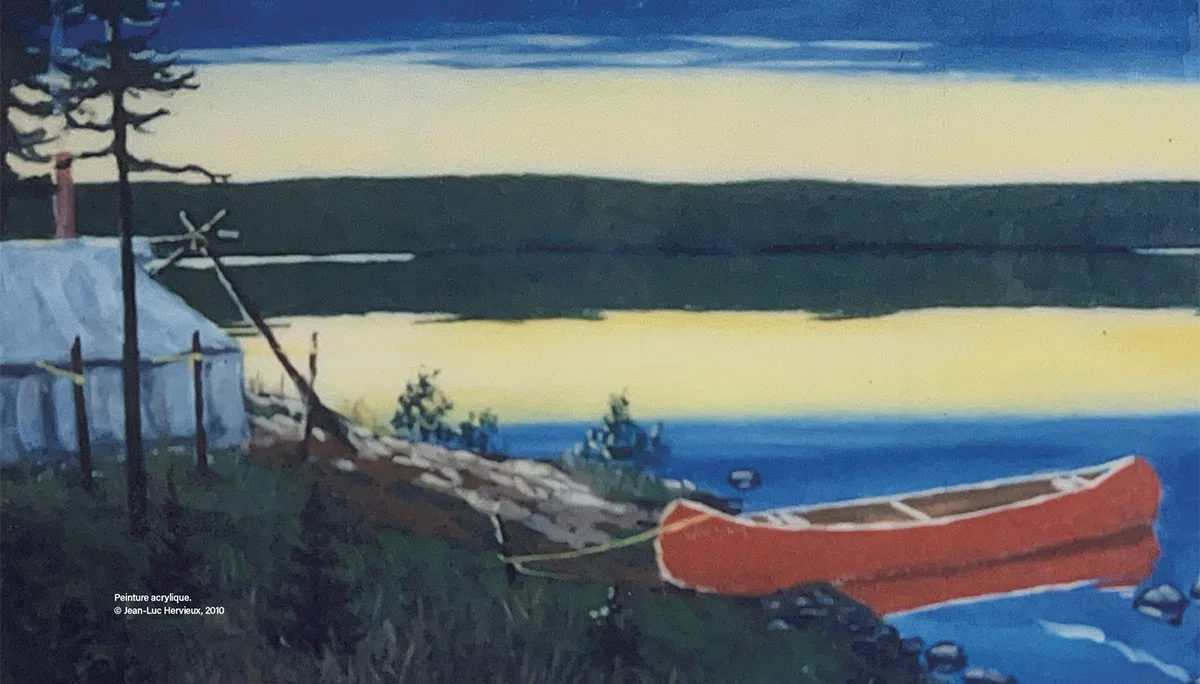Climate Justice in Pessamit: Educational Tools and Involvement for Young Ilnu from École Secondaire Uashkaikan
Organization: Lab22 - Laboratoire d'innovations sociales et environnementales
Lab22 is intended to encourage the public, particularly young people, to reflect on various social and environmental issues to co-create innovative strategies that transform communities positively and sustainably.
Location: Pessamit
Communities benefiting directly from the project: The project will primarily benefit the teaching staff and students at École secondaire Uashkaikan, the high school in Pessamit. They are part of the Ilnu community of Pessamit.
Country: Canada
Other Organizations Involved: École secondaire Uashkaikan; Conseil des Innus de Pessamit; Pessamit area, land, and resources; UQAM’s Institut des sciences de l’environnement (ISE); and Centre d’étude en responsabilité sociale et écocitoyenneté (CÉRSÉ).
 @ Jean-Luc Hervieux
@ Jean-Luc Hervieux
Background
The climate upheaval greatly concerns the Ilnu of Pessamit. It is making ecosystems more fragile and thus leads to loss of identity. According to Le temps qui change: Bouleversements climatiques sur le Nitassinan de Pessamit, a thematic atlas published in December 2024 by a research team made up of university and community members, the temperature at Nitassinan could rise 6.1 °C by the end of the 21st century. That increase would be two to three times the global average. According to Amnesty International, the Pessamiulnuat are facing climate injustice, amplified by colonization and resource exploitation on their ancestral territory. These disruptions are profoundly affecting ilnu-aitun, the traditional way of life of the Pessamiulnuat, eroding young people’s identity and threatening their well-being and future.
Goals
The project is intended to get students at Uashkaikan more involved in the fight against climate change, by developing their ability to act as eco-citizens. Educational tools will be devised in collaboration with teachers, based on case studies examined in the Atlas on the topics of forest atmosphere and biodiversity. Building on existing teaching experience, the project will expand perspectives on local cultural and environmental issues.
Main activities
- Collaborative creation of educational workshops for high school students.
- In-class workshops with Elders from the ilnu-aitun committee, key contributors to the Atlas.
- Modification of the school calendar to include periods to work with young people on the tools.
- Excursions related to the educational content.
- Discussion and shared activity to unite the educational community around the project.
- Networking activity with the Institut Tshakapesh and other Indigenous organizations to promote the project and share expertise.
Expected outcomes
- Educational tools created collaboratively around the themes explored in the Atlas.
- Teachers become better equipped to address climate issues in Pessamit’s cultural framework.
- Students at the École secondaire Uashkaikan acquire more knowledge and skills related to climate justice and develop the ability to take action and adapt to the climate crisis.
- The community becomes more resilient to climate upheaval.
- Opportunities to scale up [climate action] are developed with the Institut Tshakapesh and other Indigenous organizations.